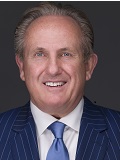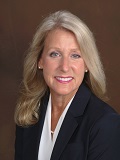
How has the economy and the rising rate environment impacted your team and your vendor partners this year?
Neil Garnett: One of the bigger impacts has been the tightening of underwriting at non-vendor finance outlets, such as local banks or credit unions. Vendor specialists have the benefit of deep asset knowledge, risk experience and expertise, and strong partner relationships, which enables a strong appetite for equipment finance.
We have also seen a need to advise newer vendor or dealer sales staff on how best to navigate the rising rate environment by understanding the options available to customers when financing the purchase of their assets. By educating this audience, we enable our partners and dealers to better support their customers, in turn selling more assets via an informed use of financing.
Eric Gross: The choppy economy and the rising rate environment have undoubtedly had

an impact on both my team and our vendor partners this year. These conditions, coupled with the recent bank scares, have definitely influenced the levels of liquidity and, subsequently, the cost of capital.
With that said, we have seen strong application volumes this year, potentially due to banks’ tighter lending standards to preserve capital and peers who may have been exposed to more recession-impacted industries. We have been fortunate to have had continued growth this year, which can be attributed to our stable access to capital, our continued ability to provide flexibility and ultimately, and perhaps most importantly, finding ways to deliver value to our customers.
Steve Grosso: Inflation and higher interest rates have dramatically increased the cost of capital for equipment manufacturers, vendors, financiers as well as end users. It’s become increasingly important to have a clear value proposition and business model.

Dave O’Neill: It’s been more than 15 years since we’ve seen rates at their current levels, but both our program partners and the Wells Fargo team have been resilient. We’ve seen strong demand so far in 2023 across all segments as supply chain issues slowly improve. We anticipate some softening in demand in the second half of the year, which will give our program partners an opportunity to continue to clear some of the current order backlog. Everyone is closely monitoring inflation. We’ve had some good numbers recently, but there’s probably a long way to go before we see rates start to move back down.
Donna Yanuzzi: Our team has been through many cycles like this. The key is for leadership to stay positive, keep the team informed and positive, look for opportunities and stay true to the foundation and fundamentals that have served us well through the years.
We love a challenge and collectively are pacing ahead of our 2023 production target in this current environment. Challenging times are prospecting times, as other lenders may have pulled back or exited the equipment finance vendor business for various reasons. That is how we have been able to add new vendors and sustain growth that keeps our team

motivated and positive in all economic conditions.
Vendors in various sectors are feeling challenged and concerned about their future sales volume. They look to us more than ever to strategically customize finance solutions like buydown rate programs, flexible lease finance options, balloon finance programs and seasonal payment plans to give their customers every option to say yes to the purchase.
How have the expectations of your vendor relationships changed since the beginning of your career?
Garnett: Within my more than 25 years in this industry, I have seen a number of changes, the biggest of which have come in the last five to seven years. First, vendors are more focused on working with finance partners that provide a full suite of products and services. It used to be that including inventory financing in a lease financing program was more the exception than the norm. Today, inventory financing is expected by most of our

vendor partners.
Another key area of change is the growing focus on energy transition. Vendors increasingly want to know where DLL stands on this important topic and how we plan to fulfill our commitments to the transition
And of course, the digital transformation of our industry continues to be a driver of change. Our vendors are expecting faster and more seamless access to our products and services, and we are working closely together to deliver enhanced experiences for their internal teams as well as end customers.
Gross: The most noticeable difference I’ve seen during my career has been that vendors have become more sophisticated and demand much more from their lending partners. They have shifted from transactional to strategic partnerships and value specific industry expertise, value-added services, and technological advancements. They expect us to understand their industry, have a deep knowledge of the equipment being leased and be able to provide insights and recommendations to help them deliver value to their customers.
As would be expected, vendors now place a greater emphasis on technological capabilities. They expect streamlined processes, quick approvals and a seamless experience throughout the leasing lifecycle for themselves and their customers. We recently launched DART, our online portal, because our vendors want real-time decisioning and notifications, online documentation, 24/7 access to information, and customized solutions tailored to their unique circumstances.
Grosso: Ha! It’s the difference between night and day from the beginning of my career through today. While fundamentals of assisting in the sale of equipment remain the same, the level of service, speed, sophistication of products and use of technology are vastly different. In addition, the speed of change is accelerating. The amount of change in the first 25 years is less than the change in the last few years. I’m excited to be part of the next wave of change!
O’Neill: I think the primary expectations remain the same: We need to excel at helping our program partners meet their strategic priorities and continuously make it easier to do business with Wells Fargo. What’s probably changed over the years is the speed with which we must execute on our commitments. Whether it’s a product or system enhancement, coverage model adjustment or a process change, we are measuring success in weeks not months. We’re able to accomplish things today at a speed we didn’t think was possible 10 years ago.
Yanuzzi: Automation and technology are two of the biggest changes. Turnaround time on credit decisioning and funding no longer takes days; it takes hours and sometime minutes.
Speed and efficiency have become critical to our existence in the vendor finance space. Vendors are looking for lenders that offer express credit decisioning, digital documentation and vendor portals for application submission to monitor their finance requests from submission to funding. This express process enhances the overall buying experience for the vendor’s customer and stops them from leaving their location and shopping at a competitor. Being early adopters of eDocs helped increase our vendor and customer base during the pandemic when no one was able to physically meet.
One thing that hasn’t changed at this point is building relationships, personally showing up and providing “above and beyond service.” Layer in administrative technology advancements and we now have more free time to personally strengthen these relationships.
What is your outlook for the vendor finance market for the year ahead? What are the greatest opportunities, challenges and concerns that you anticipate?
Garnett: Right now, we are seeing a range of views on the remainder of the year which vary by industry. On the positive end of the spectrum is the construction industry, where our partners are upbeat for 2023. In general, I would classify the outlook as “solid.” Our year-to-date results are trending positively and according to plan. While there are predictions for a dip in the U.S. economy later in the year or early 2024, if this occurs, I expect this to be relatively shallow and brief. In past economic dips, vendor finance specialists have proven the value and success of a partnership model in supporting vendors, dealers and end customers.
Gross: I am cautiously optimistic about the year ahead. The recovery from the recent economic challenges is expected to continue, which should lead to increased demand for equipment financing. Ongoing technological advancements and industry digitization also present significant opportunities for growth and innovation in vendor finance.
One of the greatest opportunities we see lies in expanding our digital capabilities and leveraging technology to enhance the leasing experience. This includes machine learning, auto-decisioning and artificial intelligence to make our processes more efficient.
As the last few years have shown us, our industry is incredibly resilient, and I am confident that we will find ways to be successful and drive innovation in even the most turbulent times.
Grosso: The year ahead is filled with uncertainty. The economy and interest rate environment being current examples. That said, there exists opportunities for value creation and quality growth within the equipment finance segment. Even if there is an economic downturn, the equipment asset class has proven to be resilient and outperforms other alternatives.
O’Neill: We are likely to continue operating in a higher rate environment for a longer period of time that we expect (or hope). It only took 15 months to get to the current rate environment, but it will likely take a lot longer for rates to normalize. However, I am certain that demand for equipment will remain robust and that both Wells Fargo and our program partners will be prepared to operate in whatever environment we are faced with in the coming months.
Yanuzzi: As long as there are manufacturers producing equipment, there will be vendors selling the equipment, and they will need a finance partner to help make that equipment purchase affordable for their customers.
What I do see changing is that financing equipment may not look like its current state. Short-term rentals/leases may become more the norm, as this next generation of business owners are accustomed to renting what they need and use.
Manufacturers and vendors are recognizing the influence AI will have on the next generation of buyers who grew up with video games and amazing technology and are introducing AI into their selling process.
Future generation equipment buyers will be more comfortable with virtually test-driving a unit and making the purchase sight unseen. This may have a positive impact on floor planning costs and improve administrative/ operational efficiencies that will positively impact the vendors’ bottom line.
On the other hand, AI buying practice may impact the personal relationship building process that has historically been the success of many vendors and lenders. It will be easy for the buyer to evaluate and test drive multiple manufacturers’/vendors’ equipment in the comfort of their home or office.
The greatest opportunities I see are in adding new vendors and attracting new talent, reintroducing lease financing and its benefits to vendors in a rising rate environment and introducing new programs like residual lease financing. The challenges I foresee include tightening credit evaluation across the industry, regulatory constraints and fraud.
No categories available
No tags available